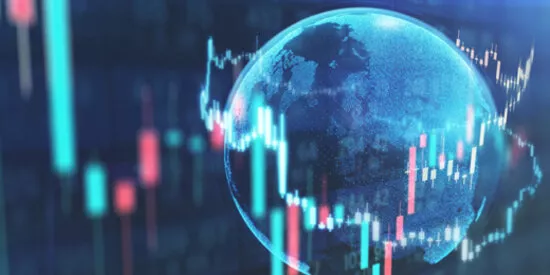
What are the latest trends and the impact of the digital transition on Capital Markets?
Discover our expert’s view, Eric Cherpion, Global Head of DCM syndicate.
What is the current context of debt capital markets?
Debt Capital Markets went through a challenging year in 2022 as the war in Ukraine, increasing inflation and aggressive monetary tightening on both sides of the Atlantic made fixed income an unloved asset class. The size and speed of the rise in yields, even in risk free assets such as German Bunds (260 bps over 2022), was unheard of even in 1994, known as the year of the “bond crash”.
The sudden attractiveness of yields on safe assets in 2022 meant they crowded out the most speculative part the fixed income market, including high yield and emerging markets. If your yield target was 3%, in 2021 you had to buy non-investment grade securities to get there. At the end of 2022, you could get that on AAA covered bonds or on many EU government securities.
We finished 2022 with the view that 2023 would be much more conducive for fixed income. Not because of an improvement in fundamentals, but because fixed income, and credit especially, was offering value versus other classes for multi asset allocators such as pension funds or insurance. That contrarian view allowed us to position ourselves well during the first months of the year, where Societe Generale built a #1 position in euro financial institutions bonds with a 11.3% market share according to Dealogic. Since then, various idiosyncratic issues around Credit Suisse and US regional banks significantly changed dynamics. Today, I would define the market as being in a healing process. We feel investors are keen to put cash at work but remain very disciplined in terms of price and credit.
How does digital transformation impact Capital Markets?
We have always seen the digital transformation of primary markets not only as necessary, but as an irreversible process. From our perspective, it has enabled us to be more efficient while mitigating operational risk.
This is why we have supported various providers of digital solutions from the outset, at first focused on the interbank market, and then on solutions integrating an element of downstream distribution to investors. Our efforts to automate the primary process are not only carried out with external providers, however. Much to the contrary – they go together with our own digital solutions developed in-house. For our issuer clients, we have developed a platform called MyCapitalMarkets, which allows them to get feedback from investors they have met during Roadshows for a potential transaction, as well as gathering deal statistics on current and past deals, for example. We have also relied on Big Data technology to create a distribution forecast on an upcoming issuance, which is naturally extremely valuable for first time borrowers (and a source of debate with funding officers).
Finally, a view on technology and primary markets would not be complete without mentioning our partnership with SG Forge in terms of tokenized issuance. This has already provided some ground-breaking transactions, notably for the European Investment Bank.
Much has been accomplished over the last 20 years, but there remains a lot more to do. Putting innovation as one of our core values shows our dedication to the digitalization and automation of the primary market. Every minute saved on a repetitive task is an extra minute available to support clients. With the advent of Artificial Intelligence, our added-value will more than ever reside in our ability to interpret the market and best advise our clients.
Can Capital Markets support the energy transition?
Their very nature, supporting the flow of capital between issues, borrowers and investors, means capital markets are essential to the energy transition. According to the OECD, estimated additional investments of 1-1.5% of GDP are needed annually to reach carbon-neutrality by 2050. It is therefore paramount to call on every source of funding available, and capital markets have a central role. To meet this objective, we have seen innovations in the markets catering for different needs. For instance, we have green bonds, which channel capital to green projects or investments (the “use of proceed” is restricted to “green” purposes), or sustainability-linked bonds where the coupon or principal is linked to an issuer’s decarbonisation milestones. There are, rightly so, strict criteria in place, and with increasing scrutiny, to ensure products identified as having an ESG purpose do indeed qualify.
Beyond products, we have seen investors increasingly focus on the transition strategy of borrowers. Investors are ready to support carbon-intensive industries, provided the sector - and more specifically the issuer - has a clear and credible decarbonisation strategy. The role of syndicate is to understand how ESG considerations impact the investment landscape for the years to come in a changing regulatory environment. Take nuclear energy for instance. For years, it was considered a no-go area for most green investors. Yet, the recognition in the European taxonomy of nuclear energy as a transition activity may soften investors’ attitude towards the sector. Time will tell.





